标签:




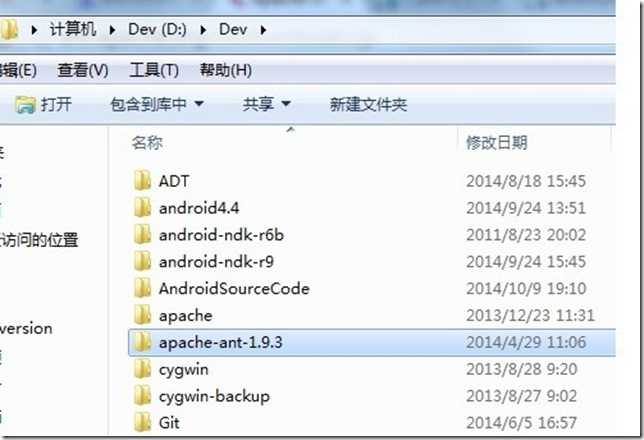

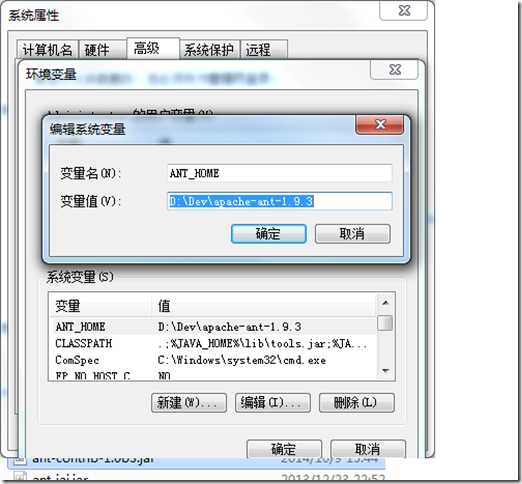

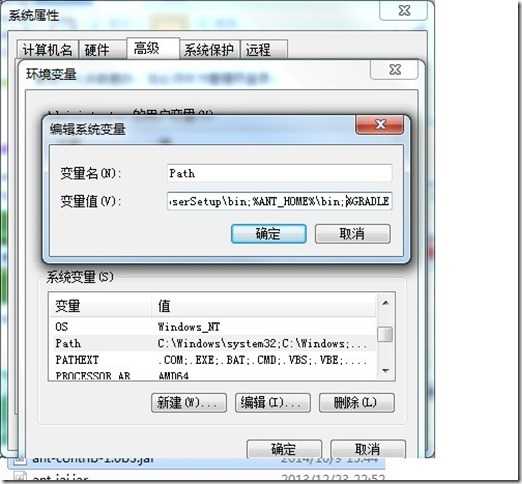



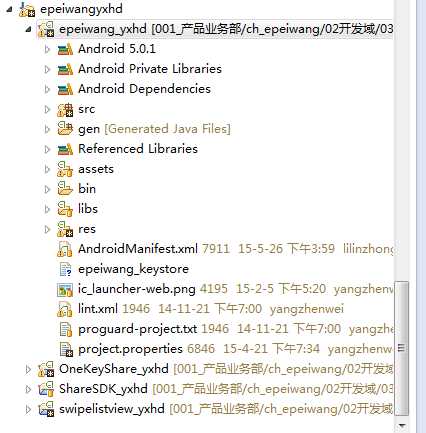


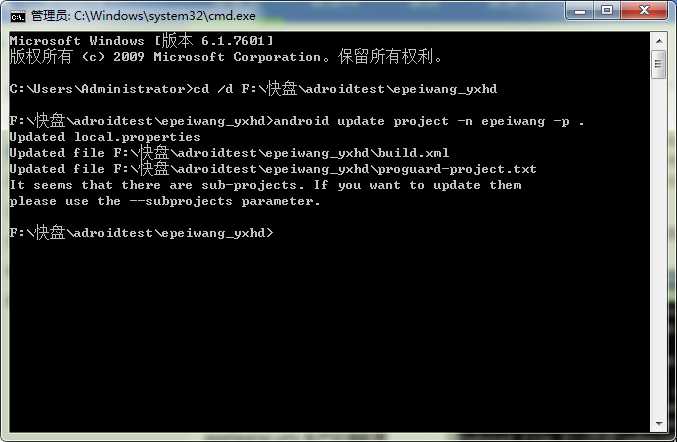
<?xml version="1.0" encoding="UTF-8"?>
<project name="epeiwang" default="help">
<!-- The local.properties file is created and updated by the ‘android‘ tool.
It contains the path to the SDK. It should *NOT* be checked into
Version Control Systems. -->
<property file="local.properties" />
<!-- The ant.properties file can be created by you. It is only edited by the
‘android‘ tool to add properties to it.
This is the place to change some Ant specific build properties.
Here are some properties you may want to change/update:
source.dir
The name of the source directory. Default is ‘src‘.
out.dir
The name of the output directory. Default is ‘bin‘.
For other overridable properties, look at the beginning of the rules
files in the SDK, at tools/ant/build.xml
Properties related to the SDK location or the project target should
be updated using the ‘android‘ tool with the ‘update‘ action.
This file is an integral part of the build system for your
application and should be checked into Version Control Systems.
-->
<!-- 此文件需要我们自己创建-->
<property file="ant.properties" />
<!-- if sdk.dir was not set from one of the property file, then
get it from the ANDROID_HOME env var.
This must be done before we load project.properties since
the proguard config can use sdk.dir -->
<property environment="env" />
<condition property="sdk.dir" value="${env.ANDROID_HOME}">
<isset property="env.ANDROID_HOME" />
</condition>
<!-- The project.properties file is created and updated by the ‘android‘
tool, as well as ADT.
This contains project specific properties such as project target, and library
dependencies. Lower level build properties are stored in ant.properties
(or in .classpath for Eclipse projects).
This file is an integral part of the build system for your
application and should be checked into Version Control Systems. -->
<loadproperties srcFile="project.properties" />
<!-- quick check on sdk.dir -->
<fail
message="sdk.dir is missing. Make sure to generate local.properties using ‘android update project‘ or to inject it through the ANDROID_HOME environment variable."
unless="sdk.dir"
/>
<!--
Import per project custom build rules if present at the root of the project.
This is the place to put custom intermediary targets such as:
-pre-build
-pre-compile
-post-compile (This is typically used for code obfuscation.
Compiled code location: ${out.classes.absolute.dir}
If this is not done in place, override ${out.dex.input.absolute.dir})
-post-package
-post-build
-pre-clean
-->
<!-- 此文件需要我们自己创建-->
<import file="custom_rules.xml" optional="true" />
<!-- Import the actual build file.
To customize existing targets, there are two options:
- Customize only one target:
- copy/paste the target into this file, *before* the
<import> task.
- customize it to your needs.
- Customize the whole content of build.xml
- copy/paste the content of the rules files (minus the top node)
into this file, replacing the <import> task.
- customize to your needs.
***********************
****** IMPORTANT ******
***********************
In all cases you must update the value of version-tag below to read ‘custom‘ instead of an integer,
in order to avoid having your file be overridden by tools such as "android update project"
-->
<!-- version-tag: 1 -->
<!-- 表示我们引用了sdk的ant的build文件-->
<import file="${sdk.dir}/tools/ant/build.xml" />
</project>
#keystore文件存放目录,我的放在当前目录下,如果要是其他目录注意反斜杠转义,比如D:\\key\\epeiwang
key.store=./epeiwang_keystore
#keystore别名
key.alias=epeiwang_keystore
#keystore密码
key.store.password=Epw20150205|001
#组织密码
key.alias.password=Epeiwang20150205|002
#如果还没有生成keystore证书,可以使用下面命令在项目目录下生成一个test.keystore证书文件
#generate test.keystore
#keytool -genkey -alias test.keystore -keyalg RSA -validity 20000 -keystore test.keystore
#apk.dir表示存放最终生成apk的目录
apk.dir=./apk
#定义项目名称
app.name=epeiwang
#渠道号,多个渠道号用逗号分隔,每个渠道号不要使用违规字符例如/:等,因为渠道号会在打包的时候放在apk的文件名中,所以包含#违规字符将无法生成最终的apk,哥就是被这个细节给坑了一个下午。这里定义了两个渠道号myapp-12345和BAI-3s322d
market_channels=360shichang
#测试环境服务器配置
test.server.url=192.168.1.10/epeiwang
test.server.image.url=192.168.1.9
test.epeiwang.url=192.168.1.10
#生产环境服务器配置
rel.server.url=111.111.111.111/epeiwang
rel.server.image.url=112.112.112.112
rel.epeiwang.url=www.epeiwang.com
<?xml version="1.0" encoding="UTF-8"?>
<project name="custom_rules" >
<!-- 引用ant-contlib这个扩展包,声明一下 -->
<taskdef resource="net/sf/antcontrib/antcontrib.properties" >
<classpath>
<pathelement location="${ant.ANT_HOME}/lib/ant-contrib-1.0b3.jar" />
</classpath>
</taskdef>
<!-- 定义一个时间变量,打完包后跟渠道号一起命名apk -->
<tstamp>
<format
pattern="yyyyMMddhhmm"
property="pktime"
unit="hour" />
</tstamp>
<!-- 创建apk存放目录 -->
<mkdir dir="${apk.dir}" >
</mkdir>
<!-- 替换参数 然后打包APK -->
<target name="replace_parameter" >
<!-- 替换服务器配置 -->
<replaceregexp
byline="false"
encoding="UTF-8"
flags="g" >
<!-- 这个是正则表达式匹配hostconfig中的值-->
<regexp pattern="epeiwang_server>(.*)</epeiwang_server" />
<substitution expression="epeiwang_server>${server_url}</epeiwang_server" />
<fileset
dir=""
includes="res/xml/hostconfig.xml" />
</replaceregexp>
<replaceregexp
byline="false"
encoding="UTF-8"
flags="g" >
<!-- 这个是正则表达式匹配hostconfig中的值-->
<regexp pattern="epeiwang_img_server>(.*)</epeiwang_img_server" />
<substitution expression="epeiwang_img_server>${server_image_url}</epeiwang_img_server" />
<fileset
dir=""
includes="res/xml/hostconfig.xml" />
</replaceregexp>
<replaceregexp
byline="false"
encoding="UTF-8"
flags="g" >
<!-- 这个是正则表达式匹配hostconfig中的值-->
<regexp pattern="epeiwang_url>(.*)</epeiwang_url" />
<substitution expression="epeiwang_url>${epeiwang_url}</epeiwang_url" />
<fileset
dir=""
includes="res/xml/hostconfig.xml" />
</replaceregexp>
</target>
<!-- 打包测试环境命令就用这个 -->
<target name="deploytest" >
<!-- 传服务器配置参数到 replace_parameter这个打包target -->
<antcall target="replace_parameter" >
<param
name="server_url"
value="${test.server.url}" />
<param
name="server_image_url"
value="${test.server.image.url}" />
<param
name="epeiwang_url"
value="${test.epeiwang.url}" />
</antcall>
<!-- 开始循环打包,从market_channels参数中取出一个渠道号用channel标识,然后通过正则修改manifest文件 -->
<foreach
delimiter=","
list="${market_channels}"
param="channel"
target="modify_manifest" >
</foreach>
</target>
<!-- 打包生产环境命令就用这个 -->
<target name="deployrel" >
<!-- 传服务器配置参数到 replace_parameter这个打包target -->
<antcall target="replace_parameter" >
<param
name="server_url"
value="${rel.server.url}" />
<param
name="server_image_url"
value="${rel.server.image.url}" />
<param
name="epeiwang_url"
value="${rel.epeiwang.url}" />
</antcall>
<!-- 开始循环打包,从market_channels参数中取出一个渠道号用channel标识,然后通过正则修改manifest文件 -->
<foreach
delimiter=","
list="${market_channels}"
param="channel"
target="modify_manifest" >
</foreach>
</target>
<target name="modify_manifest" >
<replaceregexp
byline="false"
encoding="UTF-8"
flags="g" >
<!-- 这个是正则表达式匹配manifest中meta,我用的友盟的统计,我 AndroidManifest中的配置为:
<meta-data android:value="360shichang" android:name="UMENG_CHANNEL"/>
-->
<regexp pattern="android:value="(.*)" android:name="UMENG_CHANNEL"" />
<substitution expression="android:value="${channel}" android:name="UMENG_CHANNEL"" />
<fileset
dir=""
includes="AndroidManifest.xml" />
</replaceregexp>
<!-- 这里设置最终生成包的存放目录以及apk的名称,注意这里是文件名称,所以变量中不允许出现违规字符,否则将无法生成最终的apk(会出现output is not valid 的错误) -->
<property
name="out.final.file"
location="${apk.dir}/${app.name}_${channel}_${pktime}.apk" />
<antcall target="clean" />
<antcall target="release" />
</target>
</project>
<?xml version="1.0" encoding="UTF-8"?>
<!-- 为了ant打包时候正则匹配,请不要格式化该文件 -->
<hostconfig>
<epeiwang_server>1111.1111.1111.1/epeiwang</epeiwang_server>
<epeiwang_img_server>1111.1111.1111.1</epeiwang_img_server>
<epeiwang_url>www.epeiwang.com</epeiwang_url>
</hostconfig>







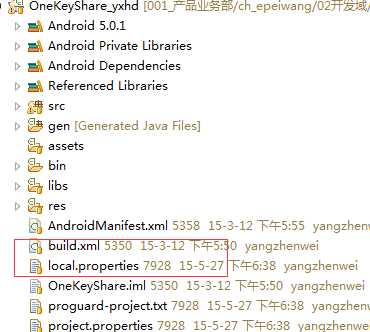
Android利用ant自动编译、修改配置文件、批量多渠道,打包生成apk文件
标签:
原文地址:http://www.cnblogs.com/ycxyyzw/p/4535459.html